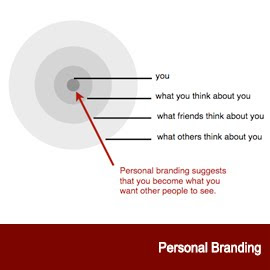
Glenn Murray wrote a great link bait post entitled "Bloggers Versus Copywriters: 8 Reasons Why Bloggers Do It Better." Most bloggers who read Problogger loved it. But does it mesh?
1. Murray: They know what they’re writing about.
Murray asserts most copywriters write about different things every day and it's rare that they write about things they are actually interested in whereas bloggers always write about what they love.
Fact or Fiction? Mostly fiction. Good copywriters are passionate about what they write about. If they aren't passionate about it, they will be. The same holds true with bloggers. Some are passionate about the material, some aren't. Advertising has an equal chance to be informative, accurate, and helpful.
2. Murray: They have a more immediate and real incentive.
Murray asserts that copywriters write about other people's products. They are paid by the hour and not for results. Bloggers, on the other hand, get paid for selling their own stuff and thus are more result-focused.
Fact or Fiction? Total fiction. Show me a copywriter that isn't generating results and I'll show you a copywriter who is out of work. They are only as good as their last ad. Bloggers, on the other hand, will write some posts that draw hundreds and others that attract no one. It's expected.
3. Murray: They know their audience (better).
Murray says most copywriters have a vague knowledge of their audience, investing more time getting to know the product or service. Bloggers, he says, know the audience intimately.
Fact or Fiction? Total fiction. While there are some novice copywriters who work solely off creative briefs, the best copywriters invest plenty of time pouring over studies, surveys, field work, direct customer contact, competitor information, and their customer interaction, etc. Sometimes, they know more about the audience than the audience knows. Bloggers, on the other hand, know their readers and, specifically, what their readers tell them.
4. Murray: They’re not writing for clients.
Murray asserts that copywriters have to write for the client, because the client ultimately decides what ads will live and die. They are also subjected to grammar Nazis that cling to arbitrary rules. Bloggers can write any way they want, he says, as long as their readers like it.
Fact or Fiction? Fact. Unless the blogger is writing a client's blog or is deeply entrenched in pay-per-post models, they have a lot of license. Copywriters are appeasing multiple people — clients and audiences (which is better than PR people who have to write for clients, editors, journalists, and the audience). However, copywriters don't have to suck it all up. They make recommendations all the time. One of my favorite statements: We can do that, but we cannot promise any results.
5. Murray: They get immediate and real feedback.
Murray says that most copywriters know when clients are happy, but not the audience. Bloggers, on the other hand, have access to everything from analytics to comments.
Fact or Fiction? Fiction. The only copywriters that do not know whether or not their work is effective are copywriters who never ask. Sure, they may not care about a one-time pick-up job, but they will know plenty about any regular gig. Bloggers do have more information. However, their analytics are skewed. Their core readers will say every post is great, even when it's not.
6. Murray: They’re not writing for themselves.
Murray says copywriters see themselves as artists. They love to write for the sake of writing. Bloggers, on the other hand, only write as a means to an end.
Fact or Fiction? Partly fact. Copywriters, especially young ones, see themselves as artists. In fact, so much so that it conflicts with Murray's fourth point. Novices take it very personally when clients change copy. But bloggers, if they have editors or clients, do too. Give them 15 years. After that, they won't cry anymore. As far as pretentious writing? That totally depends on the client and what works with their audience. Only arrogant hack copywriters *need* to be profound; bloggers too.
7. Murray: They're not writing for their teachers.
Murray says that many copywriters are haunted by their English teachers whereas bloggers don't care. He also says copywriters tend to write with complexity despite readers wanting clarity.
Fact or Fiction? Total baloney. They are just as many complex blogs as there are clearly written ads. Heck, sometimes copywriters have space for five to seven words. Clarity is critical for any written medium and if a copywriter doesn't know it, they aren't working. Even on this blog, the only time I get muddled in complexity is when I don't have time to write less.
8. Murray: They follow best practices.
Murray wraps up by saying copywriters don't follow best practices. Bloggers do follow best practices, he says.
Fact or Fiction? Completely made up. Worst point ever. Murray ought to have stopped at seven. While he might be a decent copywriter, he doesn't seem to know what the guy in the other cubicle might be doing.
Final Thoughts On Copywriters Vs. Bloggers.
I've said it before and I'll say it again. Copywriters and bloggers cannot be compared, not really. There are only good writers and bad writers (and everything in between). For anyone working in the field that really knows their stuff, they'll tell you that.
The only difference between copywriters and bloggers is the style in which they write. And, some of those copywriters and bloggers are blessed (me among them) with the ability to toggle back and forth between those styles (articles, news releases, etc.). Not all writers can do that and that's okay.
If I've learned anything over the years, it's that every style of writing can teach you to be a better writer. I've shared that with every single writing class I've ever taught. Don't discount any of it. It's all good stuff (especially poetry). After that, it's all in how you apply it and whether or not someone will buy it.
































